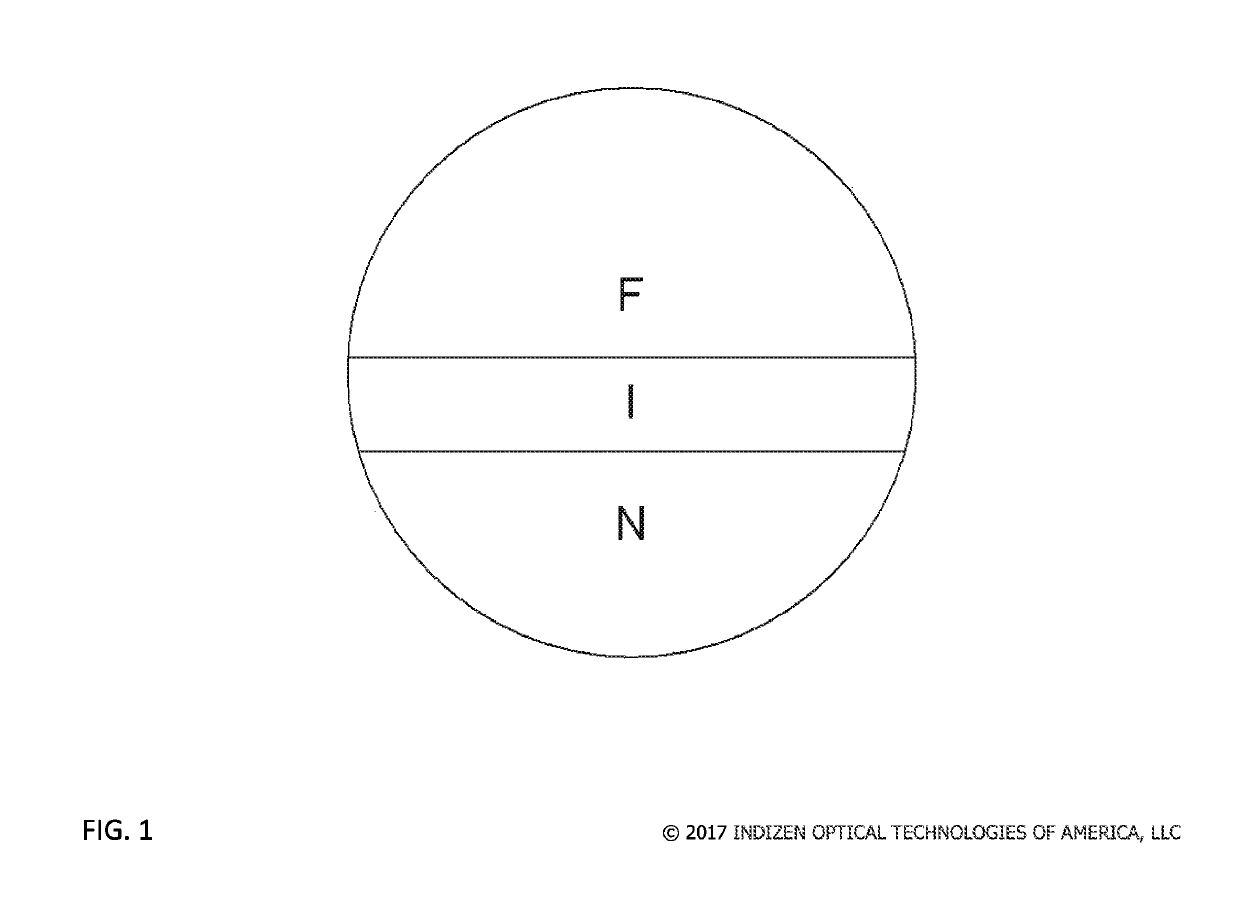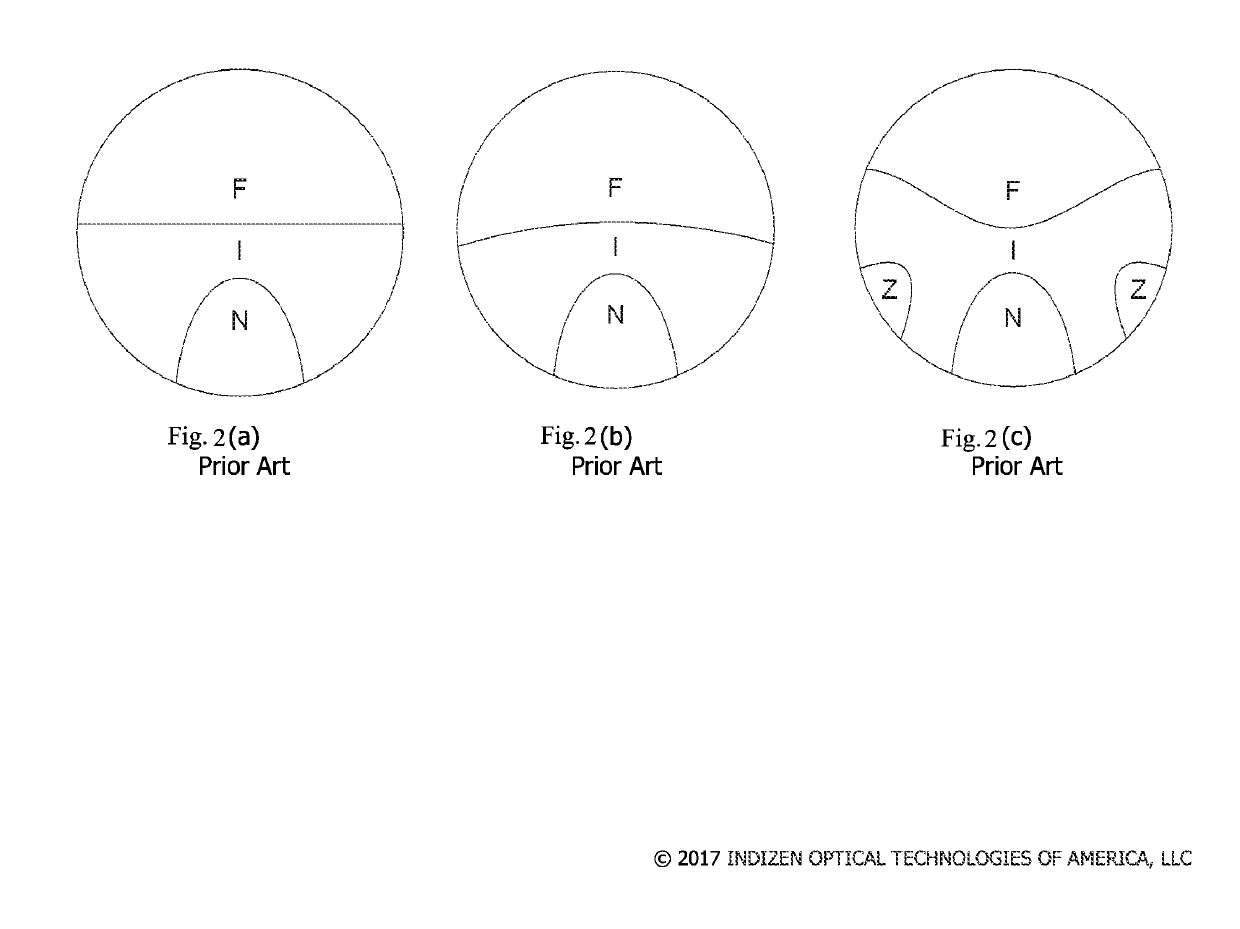Progressive lenses with reduced peripheral mean sphere
a technology of peripheral mean sphere and progressive lenses, applied in the field of progressive lenses, can solve the problems of merit function yielding less than optimal, power components s, c and a being independent of each other, and not being able to distribute independently over the lens surfa
- Summary
- Abstract
- Description
- Claims
- Application Information
AI Technical Summary
Benefits of technology
Problems solved by technology
Method used
Image
Examples
Embodiment Construction
[0015]Progressive ophthalmic lenses are configured using a merit function which takes into consideration the requirements for lens optical power of a user at different distances. Lens optical power is defined by three components: sphere S, cylinder C and cylinder axis A.
[0016]Referring now to FIG. 1, a distribution of a mean sphere for a progressive addition lens is shown as a two-dimensional map. In FIG. 1, an ideal distribution is presented. The lens is distributed into three zones marked F, I and N representing F for far, I for intermediate and N for near vision. That is, the lens power for far, intermediate and near is located in each of the regions F, I and N. In the regions F and N, the mean sphere is ideally constant, whereas in the region I the power smoothly changes from the value at F to the value at N (when viewed from top to bottom). In practice, the ideal distribution shown in FIG. 1 cannot be achieved because of physical constraints on the geometry of a lens. Instead, ...
PUM
 Login to View More
Login to View More Abstract
Description
Claims
Application Information
 Login to View More
Login to View More - R&D Engineer
- R&D Manager
- IP Professional
- Industry Leading Data Capabilities
- Powerful AI technology
- Patent DNA Extraction
Browse by: Latest US Patents, China's latest patents, Technical Efficacy Thesaurus, Application Domain, Technology Topic, Popular Technical Reports.
© 2024 PatSnap. All rights reserved.Legal|Privacy policy|Modern Slavery Act Transparency Statement|Sitemap|About US| Contact US: help@patsnap.com










